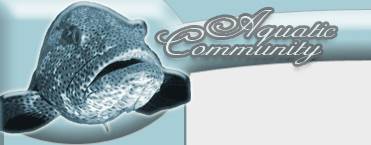Facial nerve paralysis in dogs
What is facial nerve paralysis?
Facial nerve paralysis in dogs can have a wide range of causes, including trauma, inflammation of the middle ear (otis media), neuromuscular diseases, inflammatory CNS diseases, cancer, polyneuropathies (diseases affecting multiple nerves), and surgery of the ear or nearby areas. In many dogs, the vet will never find the underlying cause of the facial nerve paralysis.
In a dog suffering from facial nerve paralysis, there is a problem with the 7th cranial nerve. This causes improper function or complete paralysis of the muscles that controls facial expressions and facial movement, including the muscles responsible for moving the lips, nose, eyelids and ears.
Facial nerve paresis is a milder condition that only causes weakness of the face, not full blown paralysis.
Breeds at risk
Facial nerve paralysis can affect all dog breeds, but some are more prone to this problem than others. Examples of such especially vulnerable dog breeds are Boxer, English setter, Cocker spaniel, and Pembroke Welsh corgi.
Facial nerve paralysis symptoms in dogs
The symptoms of facial nerve paralysis can vary depending on the underlying health problem.
Facial nerve paralysis will often lead to symptoms such as drooping of the ear (in breeds with erect ears), inability to blink, and drooping of the lips. The eye can look irritated or emit a discharge, and the pupils can become asymmetric in size. Nystagmus, i.e. abnormal movement of the eyes, can set in, and one eye might look more opened than the other (this is known as “asymmetric appearance to the orbital fissures”.
The malfunctioning lips can make it hard for the dog to eat and drink. Excessive salivation is also common in dogs suffering from facial nerve paralysis, and you may be able to notice a slight deviation of the nose to one side of the face. Some dogs will tilt the head, and uncoordinated gait can develop. The disease can also make the dog weak.
In many cases, only one side of the face is affected.
In cases where the facial nerve paralysis becomes chronic, fibrosis can develop which can make the ear and lips appear to be in an abnormal position.
Facial nerve paralysis treatment for dogs
In order to treat the facial nerve paralysis the vet must find the underlying health problem and treat this. Unfortunately, up to 75 percent of the cases have no detectable cause and the vet is therefore unable to treat the underlying illness.
To prevent corneal damage as a result of the paralysis, your dog might need eye lubricants. When a dog fails to blink, they eyes will suffer unless the dog owner compensate by administering eye lubricants. Your vet can recommend you ointments or drops and teach you how to administer them. In most situations, “artificial tears” should be administered at least four times per day.
If the dog has already developed corneal ulcers or corneal inflammation, these conditions must be treated with suitable antibiotics. Severe ulceration can lead to permanent eye damage if left untreated.
Nervous system diseases: (click for more info)
Cauda Equina Syndrome in dogs
Cerebellar abiotrophy in dogs
Cerebellar hypoplasia in dogs
Coonhound paralysis (polyradiculoneuritis) in dogs
Dancing Doberman Disease
Epilepsy in dogs
Facial nerve paralysis in dogs
Granulomatous meningoencephalitis in dogs
Laryngeal paralysis in dogs
Polyneuropathy in dogs
Scotty Cramp in dogs
Syringomyelia in dogs
Tick paralysis in dogs
White dog shaker syndrome
Wobbler disease in dogs
